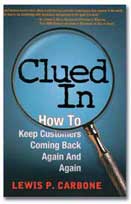 In his book “Call of the Mall”, Paco Underhill talks at length about the way mall floor plans and directories are badly designed and make it hard for shoppers to find their way. In one of my expeditions to Mong Kok (most famous shopping district in Hong Kong) I was looking at the small booklets provided by Langham Place shopping mall to help shoppers find their way. These booklets could prove handy in a shopping mall that offers almost 600,000 sq. ft. of floor space and spans over 13 floors!
In his book “Call of the Mall”, Paco Underhill talks at length about the way mall floor plans and directories are badly designed and make it hard for shoppers to find their way. In one of my expeditions to Mong Kok (most famous shopping district in Hong Kong) I was looking at the small booklets provided by Langham Place shopping mall to help shoppers find their way. These booklets could prove handy in a shopping mall that offers almost 600,000 sq. ft. of floor space and spans over 13 floors!With my background and experience in usability, it was an opportunity to identify few flaws in the design of the booklet:
 Aesthetics driven
Aesthetics drivenThe booklet is very nice to look at (the picture on the left presents a front and back view). Unfortunately as it is sitting on the stand at the entrance of the mall, the color difference between the front and the back and the labels “Shopping Guide” and “Dining Guide” lead shoppers to think that these are two entirely different booklets. Many pick two booklets up and only realize after some time that the two are actually the same.
Information Architecture
Another flaw is in the structure of the booklet. It is accordion or zig-zag folded and the title on each side (front and back) should represent what it contains. While holding the booklet on the “shopping guide” side, shoppers can browse a list of all the shops divided in subcategories, with no map of where they are. However on the other side, “dining guide”, the first two pages are dedicated to listing restaurants, while the rest is a series of floor plans to actually locate the shops. I can very well imagine the designer of this booklet thinking that there are too many shops and restaurants compared to the number of floor plans and deciding to group restaurants and floor plans together under a “Dining Guide” category so that the accordion fold CONCEPT would still work…
Not task-oriented
The last flaw of this booklet is that it was not designed with relevant tasks in mind. Shoppers might have two main tasks when taking the booklet. They may need an overview of all the shops available, or they may have a specific shop in mind and want to locate it. First, with subcategories like “The Spiral”, which is a specific location of the shopping mall, it makes it very hard for new shoppers, who do not know the mall’s jargon to get an overview. Second, shoppers who want to locate a specific shop have to look for the code of the shop first, figure out that floor plans are under dining guide and finally look up the shop on these plans; not the most straight-forward of tasks…
It is interesting to see that for an item like a guide to a shopping mall, design seems to take priority over usability.

No comments:
Post a Comment